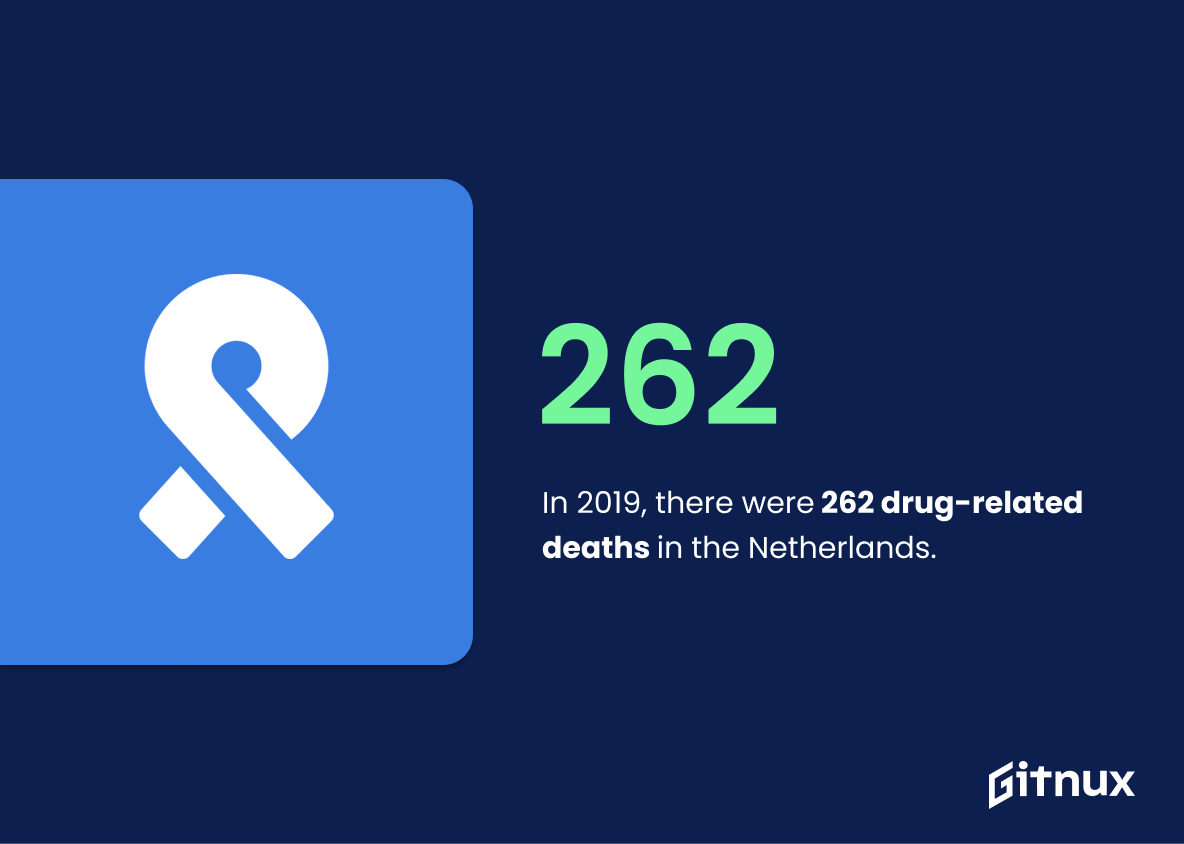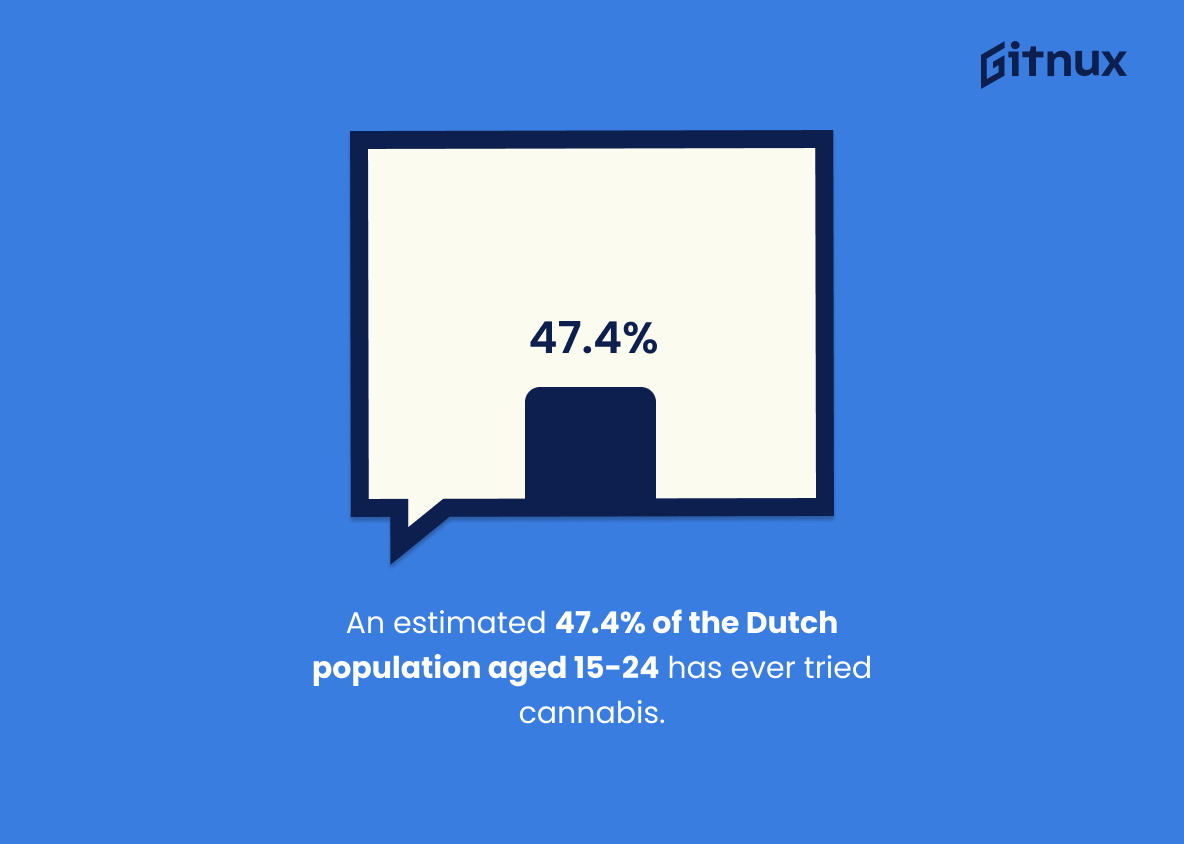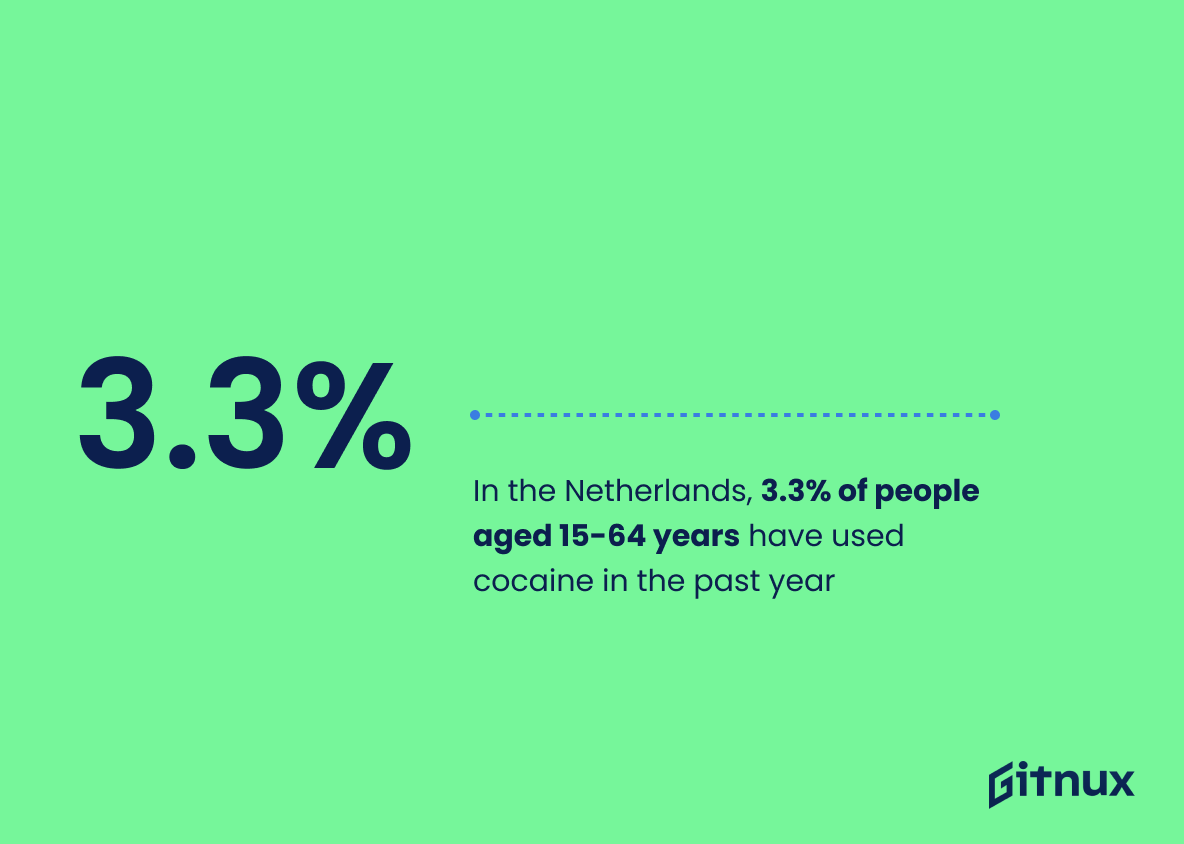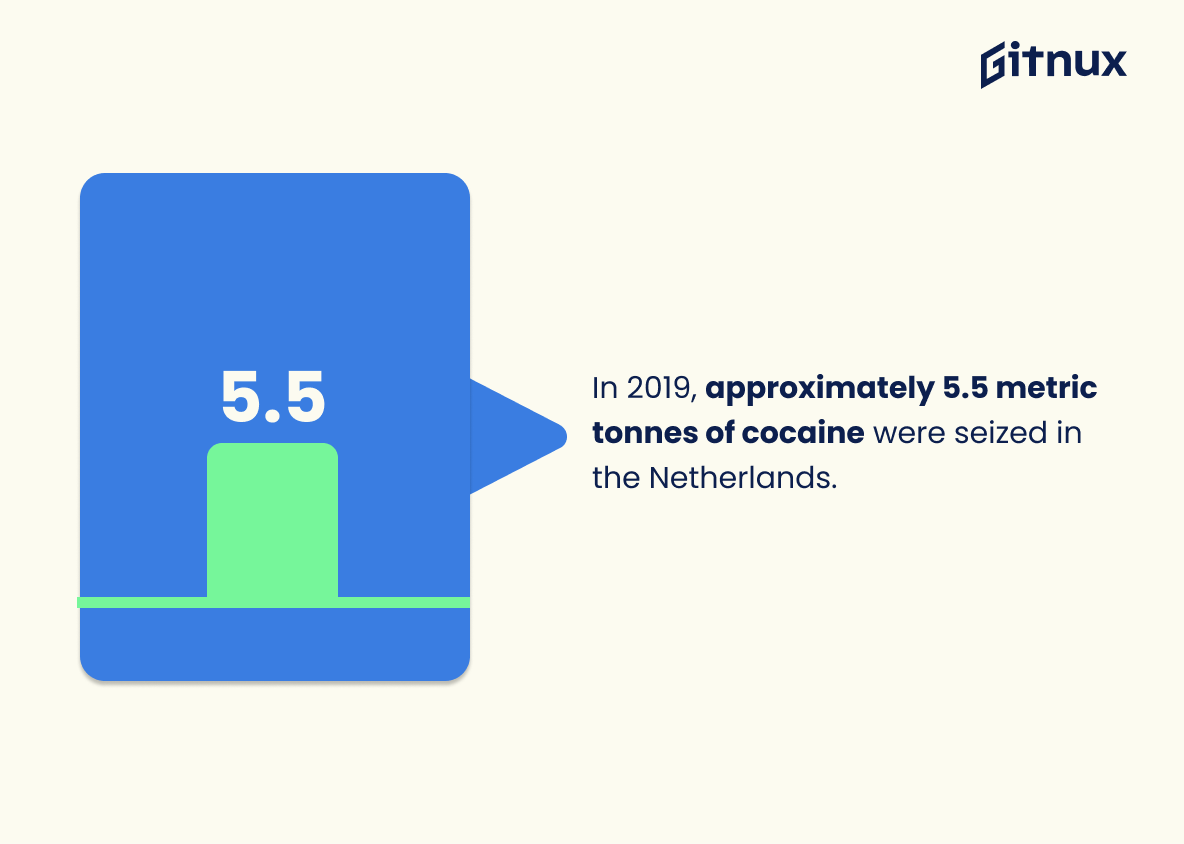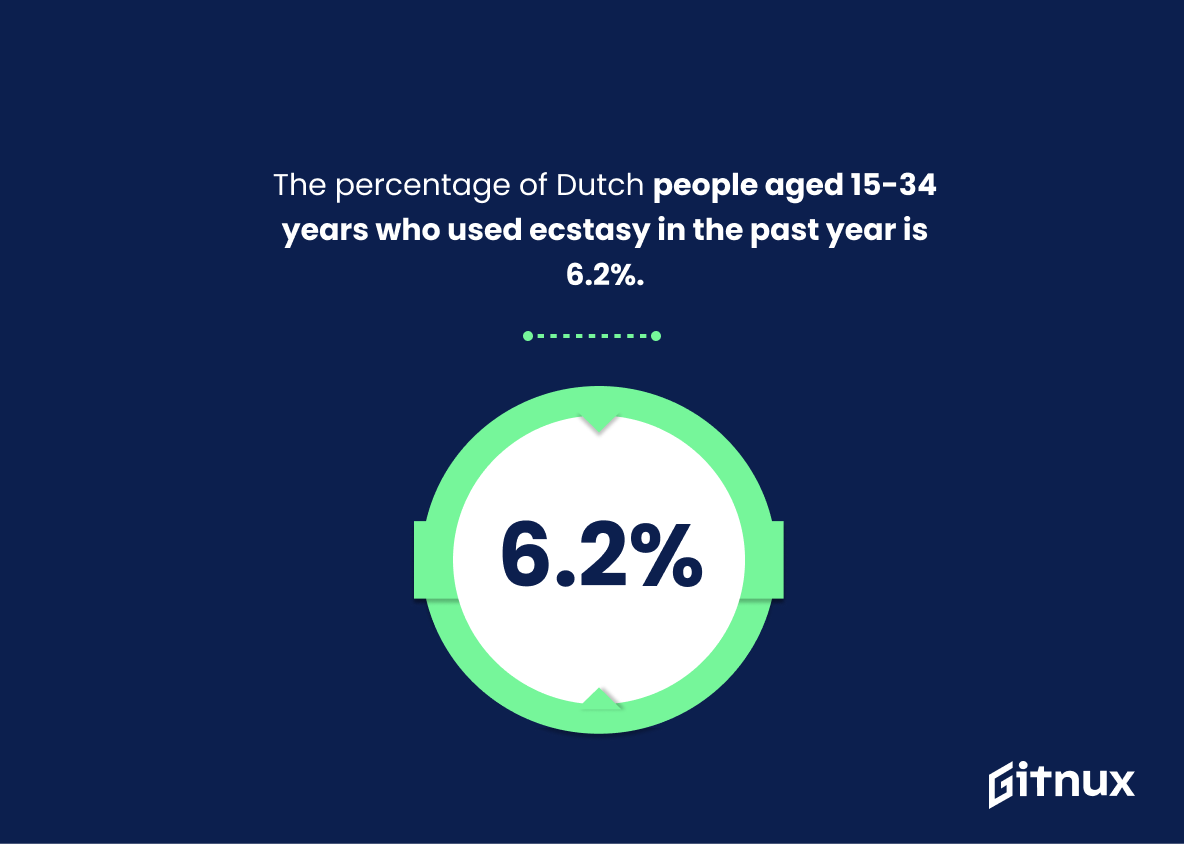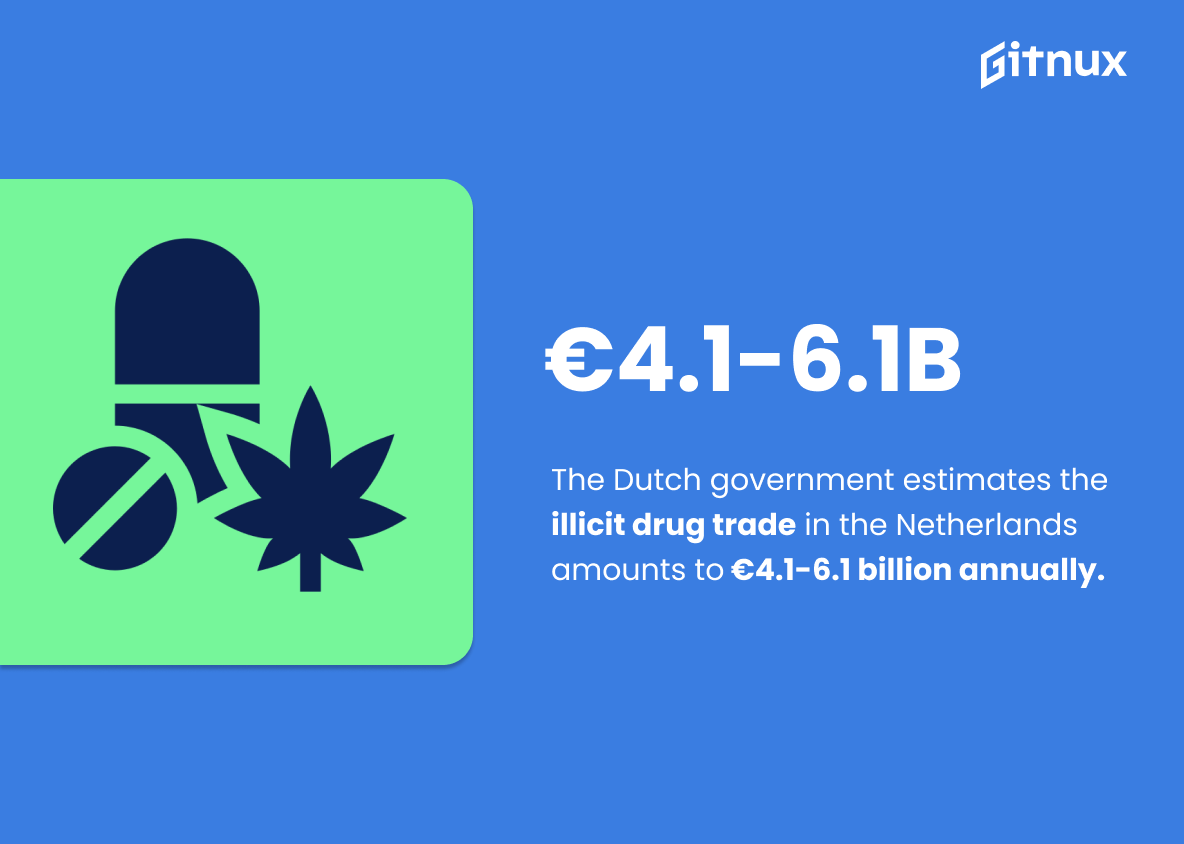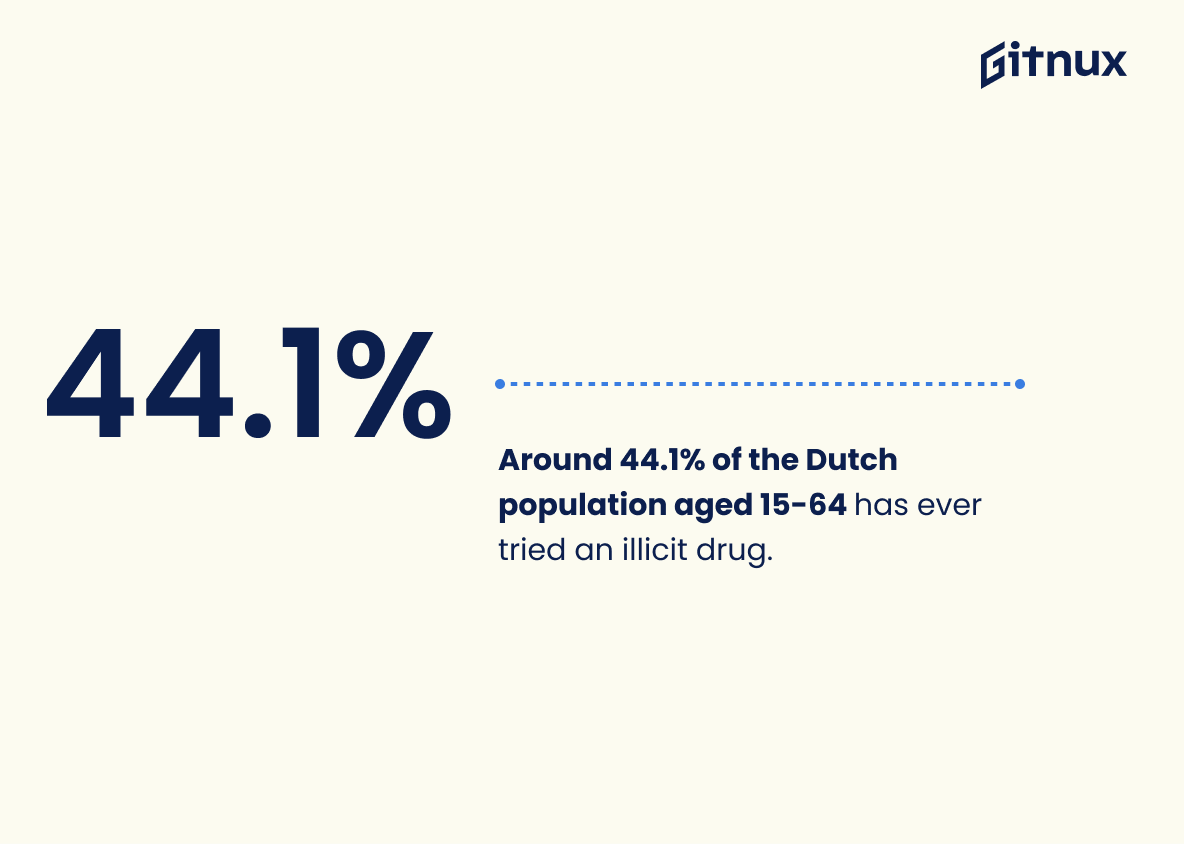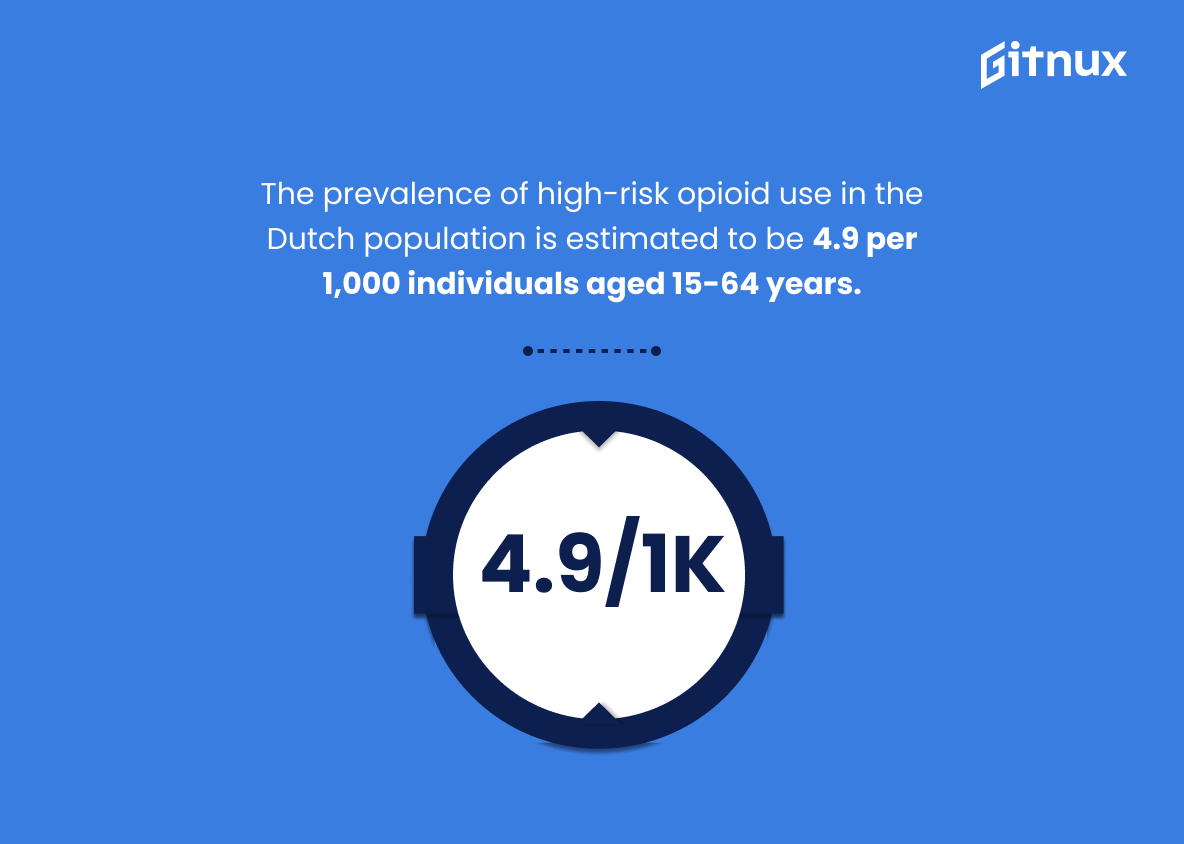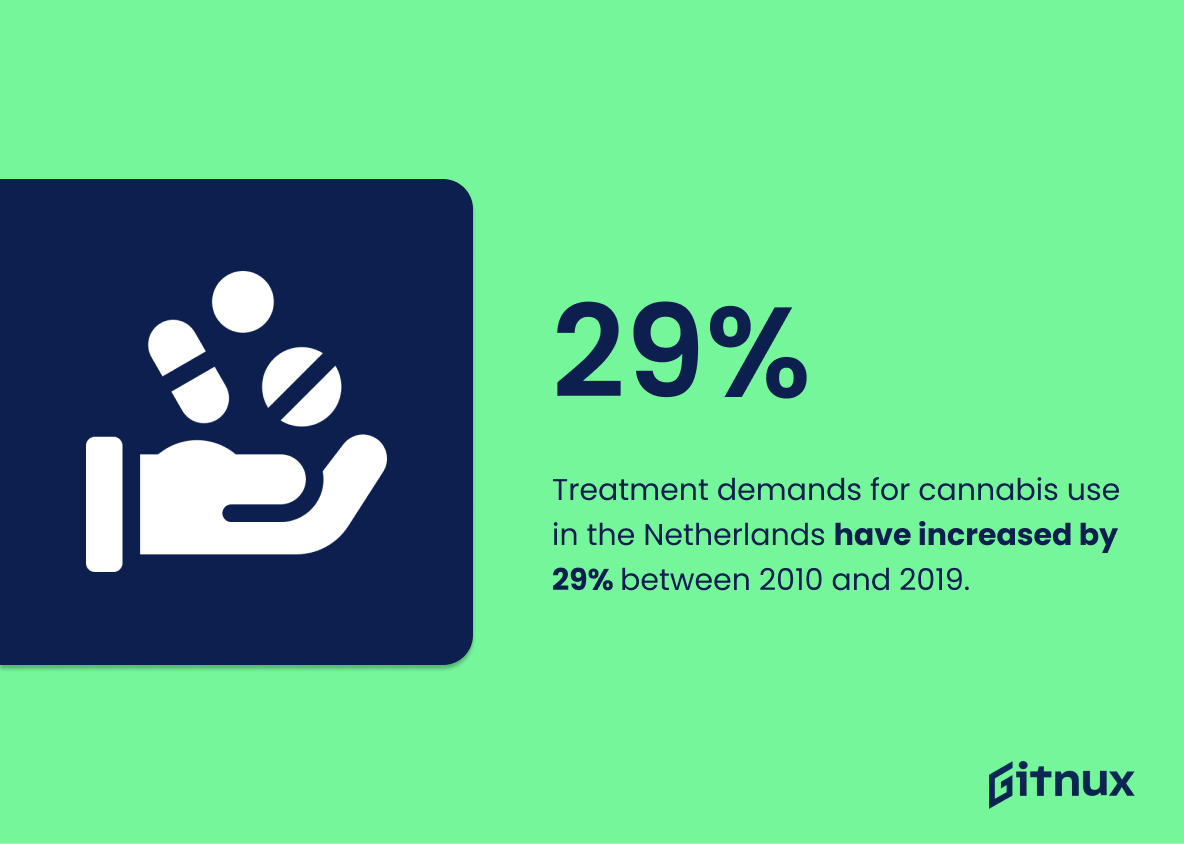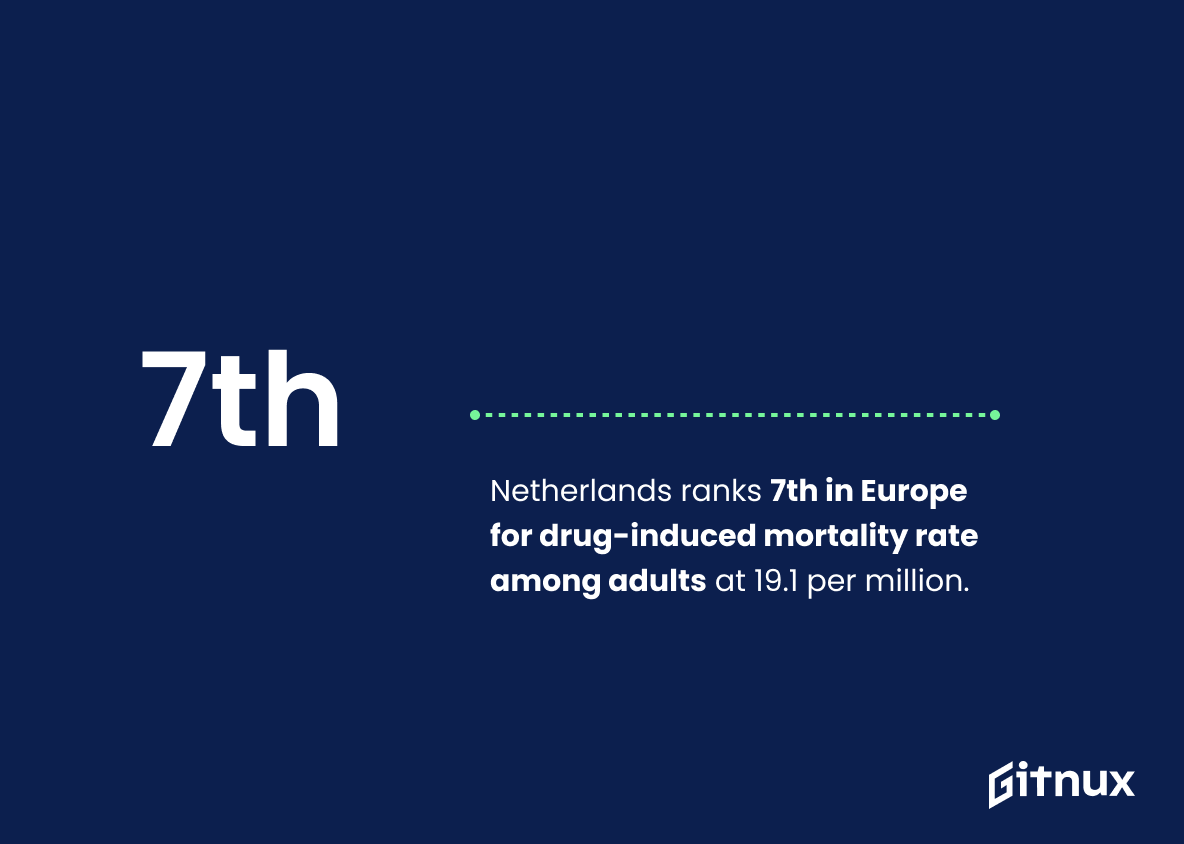The Netherlands is a country with an extensive history of drug use and production. This blog post will explore the current statistics on drugs in the Netherlands, including MDMA and amphetamine production, cannabis usage rates among different age groups, ecstasy market control by Dutch smugglers, drug-related deaths in 2019, cocaine usage rates among adults aged 15-64 years old as well as heroin seizures made by law enforcement in 2020. Additionally we’ll look at synthetic drug precursors seized by police and customs officers in 2020; treatment demands for cannabis use between 2010 to 2019; prevalence of high risk opioid users amongst those aged 15-64 years old; percentage of people who have ever tried illicit drugs or GHB regularly; and finally the rate of adult (15–64) mortality due to drugs per 1 million inhabitants.
This statistic is a stark reminder of the Netherlands’ position as a major producer of MDMA and amphetamine in Europe. It highlights the need for greater awareness and action to tackle the production and distribution of these drugs in the country. It also serves as a warning to other countries in Europe that the Netherlands is a major source of these drugs and that they should take steps to prevent them from entering their own countries.
The percentage of the Dutch population aged 15-64 years who used cannabis in the past year is 9.6%
This statistic is a telling indication of the prevalence of cannabis use in the Netherlands, highlighting the fact that nearly one in ten Dutch citizens aged 15-64 have used cannabis in the past year. This statistic is particularly relevant in the context of a blog post about Netherlands Drugs Statistics, as it provides a snapshot of the current state of drug use in the country.
Netherlands Drugs Statistics Overview
In 2019, there were 262 drug-related deaths in the Netherlands
This statistic is a stark reminder of the devastating impact that drugs can have on individuals and communities in the Netherlands. It serves as a reminder of the need for continued efforts to reduce drug-related deaths and to ensure that those affected by drug use have access to the support and resources they need.
An estimated 47.4% of the Dutch population aged 15-24 has ever tried cannabis
This statistic is a telling indication of the prevalence of cannabis use among the Dutch youth. It highlights the need for further research into the effects of cannabis use and the potential for harm, as well as the need for education and prevention efforts to reduce the number of young people experimenting with the drug.
In the Netherlands, 3.3% of people aged 15-64 years have used cocaine in the past year
This statistic is a telling indication of the prevalence of cocaine use in the Netherlands. It highlights the fact that drug use is a reality in the country, and that it is not an isolated issue. This statistic is an important reminder that drug use is a problem that needs to be addressed in the Netherlands, and that it is not something that can be ignored.
In 2019, approximately 5.5 metric tonnes of cocaine were seized in the Netherlands
This statistic is a stark reminder of the prevalence of cocaine in the Netherlands. It highlights the magnitude of the problem and the need for further action to be taken to reduce the amount of cocaine being trafficked in the country. It also serves as a warning to those considering using or selling cocaine in the Netherlands, as the authorities are actively working to reduce the amount of cocaine in circulation.
The percentage of Dutch people aged 15-34 years who used ecstasy in the past year is 6.2%
This statistic is a telling indication of the prevalence of ecstasy use among Dutch people aged 15-34 years. It serves as a reminder that drug use is still a reality in the Netherlands, and that it is important to be aware of the risks associated with drug use.
The Dutch government estimates the illicit drug trade in the Netherlands amounts to €4.1-6.1 billion annually
This statistic is a stark reminder of the immense financial burden that the illicit drug trade places on the Netherlands. It is a sobering indication of the scale of the problem, and a call to action for the government to take decisive steps to tackle the issue. It is a stark reminder that the Netherlands is not immune to the global drug trade, and that the country must take steps to protect its citizens from the dangers of drug abuse.
Approximately 44% of wastewater in the Netherlands contained traces of amphetamine
This statistic is a stark reminder of the prevalence of amphetamine in the Netherlands, highlighting the need for further action to be taken to reduce its use. It is a worrying indication of the extent to which amphetamine has infiltrated the country’s water supply, and serves as a warning of the potential health risks associated with its consumption.
Around 44.1% of the Dutch population aged 15-64 has ever tried an illicit drug
This statistic is a telling indication of the prevalence of drug use in the Netherlands. It highlights the fact that a significant portion of the population has experimented with illicit drugs, demonstrating the need for further research and education on the subject.
The Netherlands ranks fourth in Europe for cannabis production
This statistic is a telling indication of the prevalence of cannabis production in the Netherlands, highlighting the country’s position as a major player in the European cannabis market. It is an important piece of information to consider when discussing the Netherlands’ drug statistics, as it provides insight into the country’s role in the production and distribution of cannabis.
The prevalence of high-risk opioid use in the Dutch population is estimated to be 4.9 per 1,000 individuals aged 15-64 years
This statistic is a stark reminder of the prevalence of high-risk opioid use in the Netherlands, highlighting the need for further action to be taken in order to reduce the number of individuals engaging in this dangerous behavior. It serves as a call to action for the Dutch government and other stakeholders to take steps to address this issue and ensure that individuals are provided with the necessary resources to prevent and reduce opioid use.
Treatment demands for cannabis use in the Netherlands have increased by 29% between 2010 and 2019
This statistic is a telling indication of the growing prevalence of cannabis use in the Netherlands. It highlights the need for increased attention to the issue of drug use in the country, and the need for more effective treatment and prevention strategies. It also serves as a reminder that the Netherlands must remain vigilant in its efforts to reduce the harms associated with drug use.
Dutch police and customs seized over 38,000 kilograms of synthetic drugs’ precursors in 2020
This statistic is a stark reminder of the prevalence of synthetic drugs in the Netherlands. It highlights the sheer magnitude of the problem, with 38,000 kilograms of precursors seized in 2020 alone. It serves as a warning that the Netherlands is facing a serious drug crisis, and that more needs to be done to tackle the issue.
The Netherlands ranks 7th in Europe for drug-induced mortality rate among adults (15-64 years) at 19.1 per 1,000,000 inhabitants
This statistic is a stark reminder of the impact that drugs have on the Netherlands. It highlights the need for greater awareness and prevention of drug-related deaths in the country, as well as the need for more effective treatment and rehabilitation services. It is a call to action for the Dutch government and society to take a more proactive stance in tackling the issue of drug-related mortality.
Dutch law enforcement seized approximately 1.2 tonnes of heroin in 2020
The seizure of 1.2 tonnes of heroin in 2020 is a stark reminder of the ongoing battle against drug trafficking in the Netherlands. This statistic serves as a reminder of the immense amount of drugs that are still being trafficked through the country, and the need for continued vigilance and enforcement to combat the problem. It also highlights the need for further research and analysis into the drug trade in the Netherlands, in order to better understand the scope of the issue and develop effective strategies to tackle it.
Conclusion
The Netherlands is a major player in the European drug market, with high levels of production and consumption. MDMA and amphetamine are produced at some of the highest rates in Europe, while cannabis use remains popular among Dutch citizens aged 15-64 years. The country also has one of the largest ecstasy markets globally, controlled by Dutch drug smugglers. Drug-related deaths have been on an upward trend since 2017, although they remain relatively low compared to other countries in Europe. Cocaine use is more prevalent than heroin or GHB but still lower than that for cannabis or ecstasy; however it appears to be increasing as evidenced by rising seizures over recent years. Finally, synthetic drugs precursors are being seized at higher rates each year due to increased law enforcement efforts against illicit production sites across the country.
References
0. – https://www.www.emcdda.europa.eu
1. – https://www.www.government.nl
2. – https://www.ec.europa.eu
3. – https://www.www.europol.europa.eu
